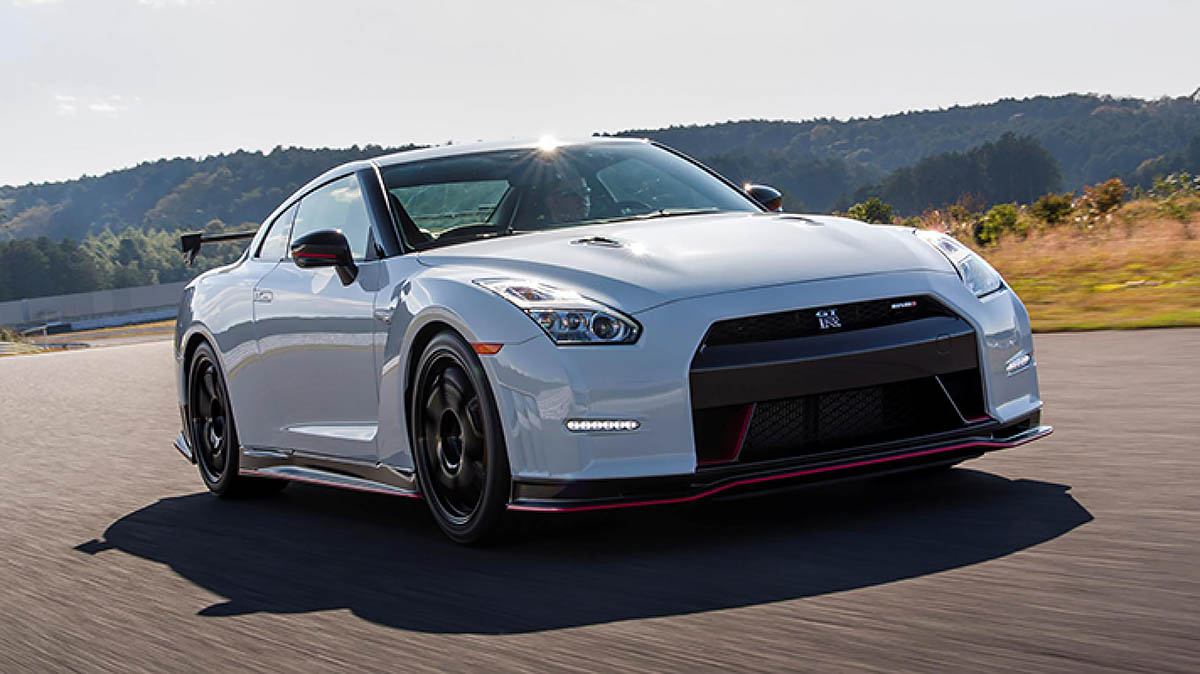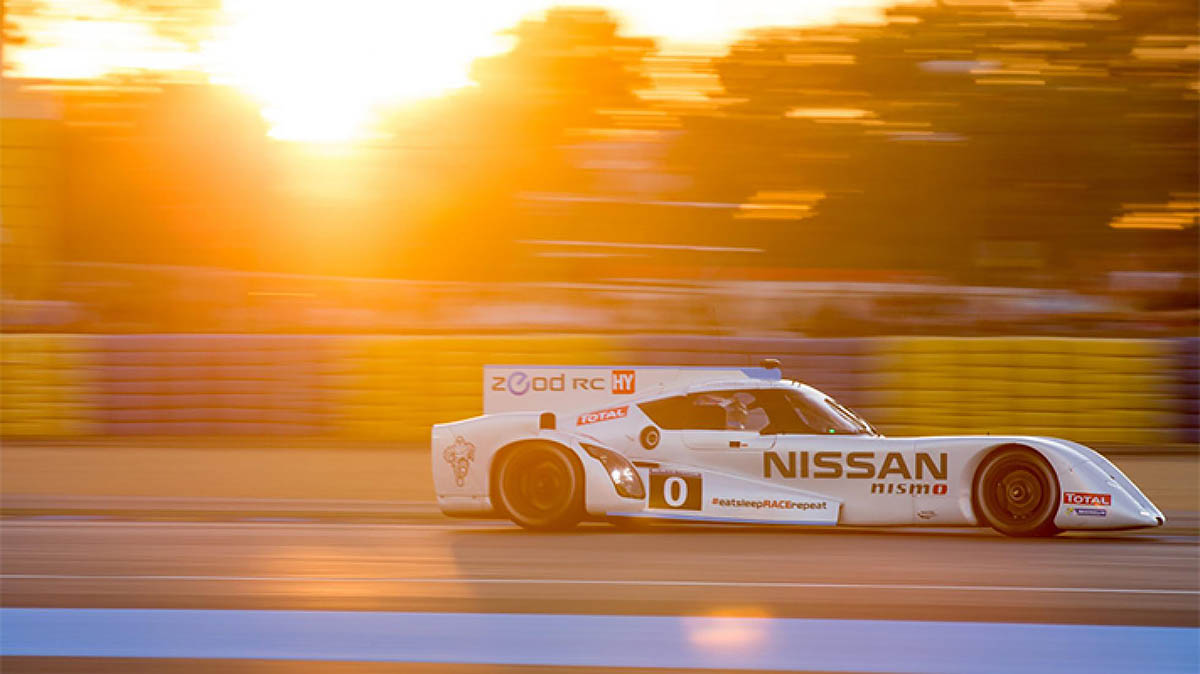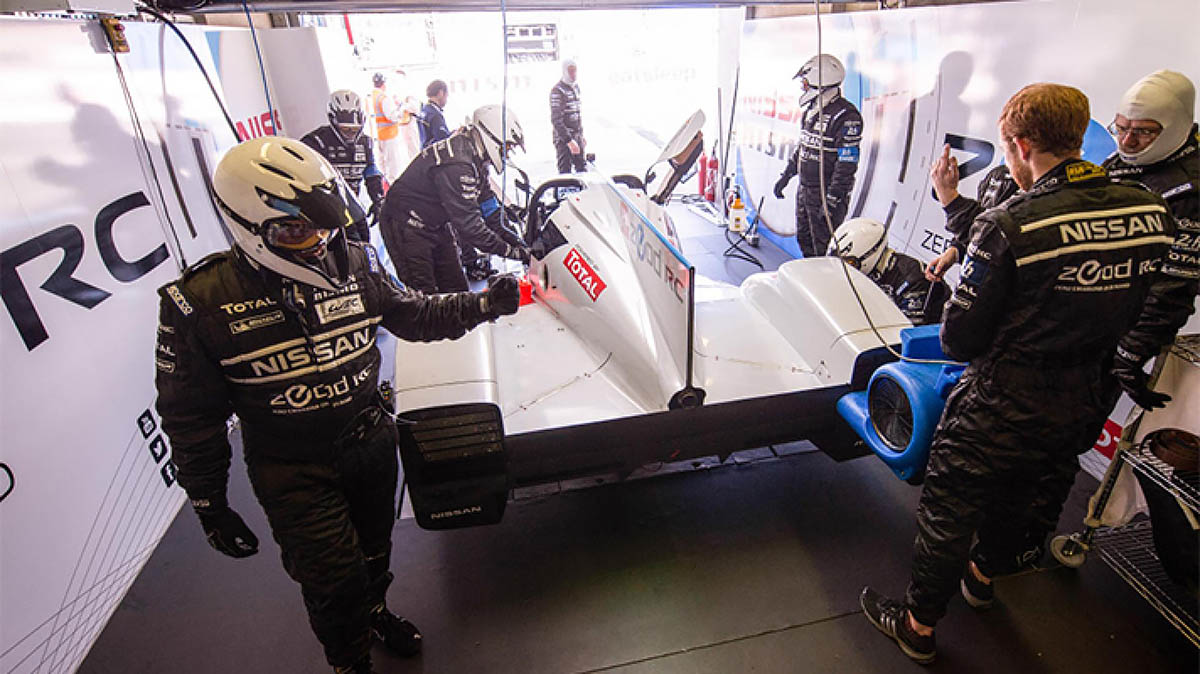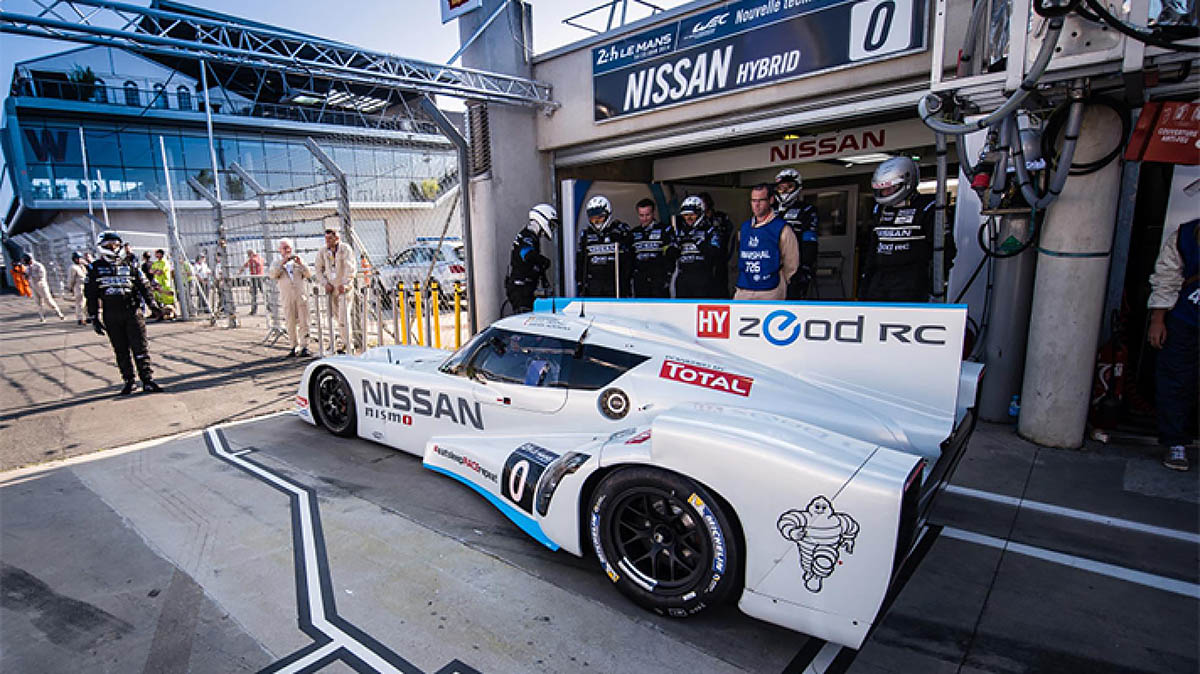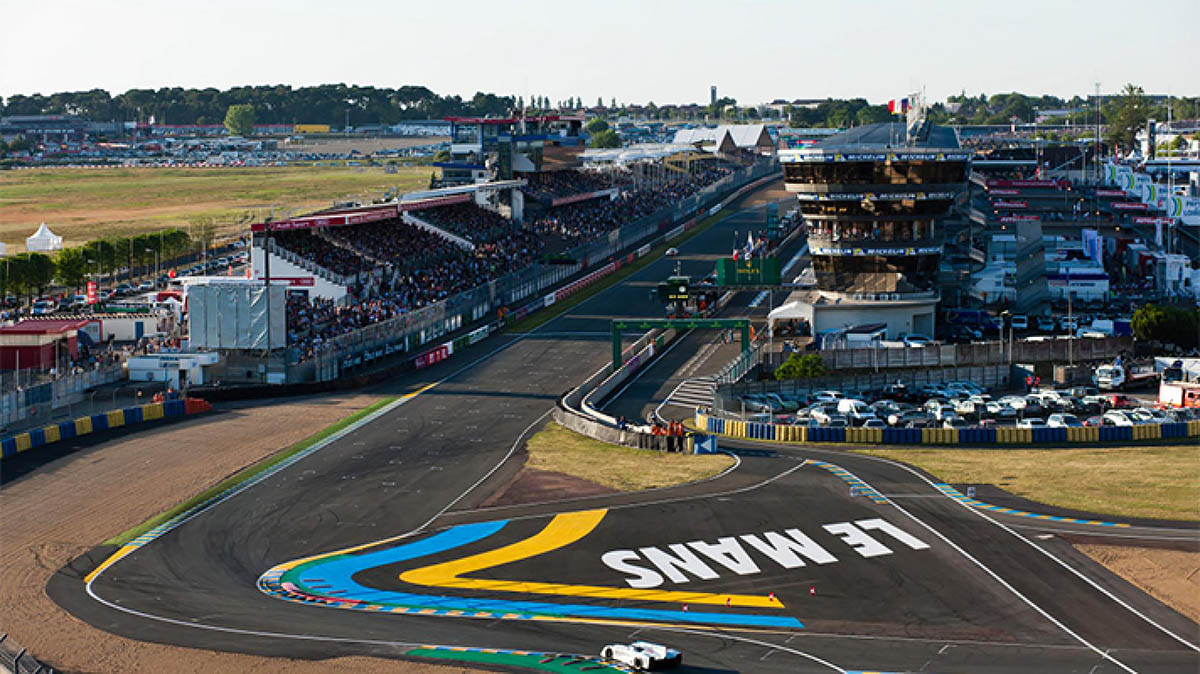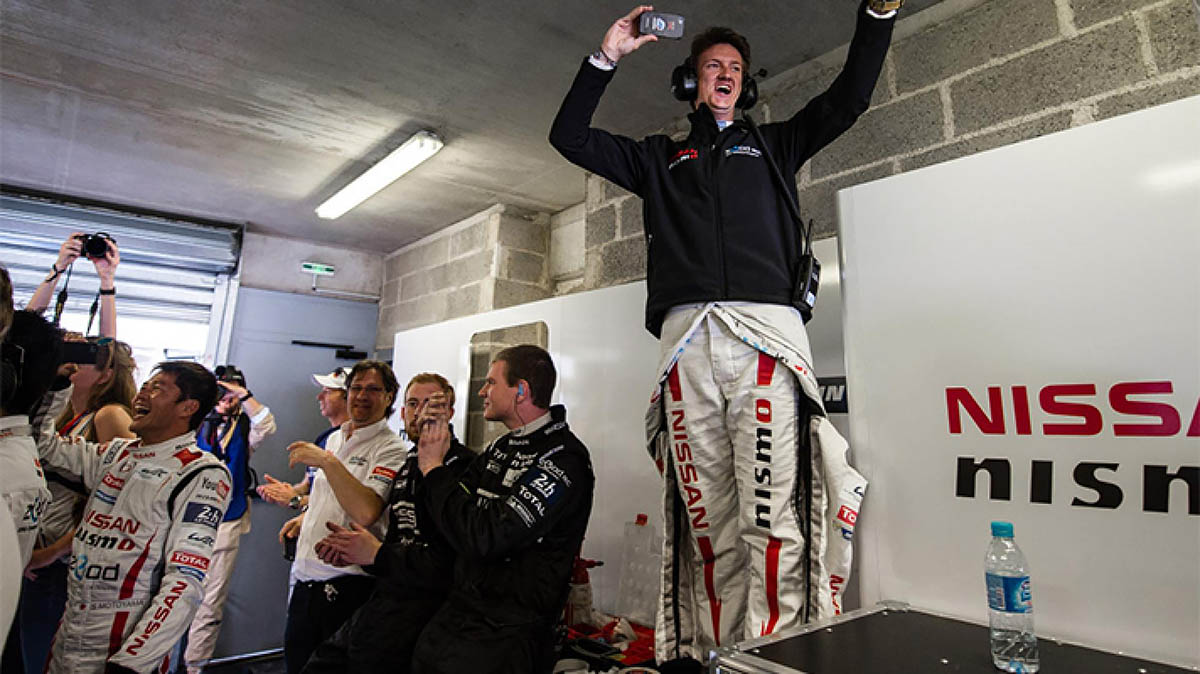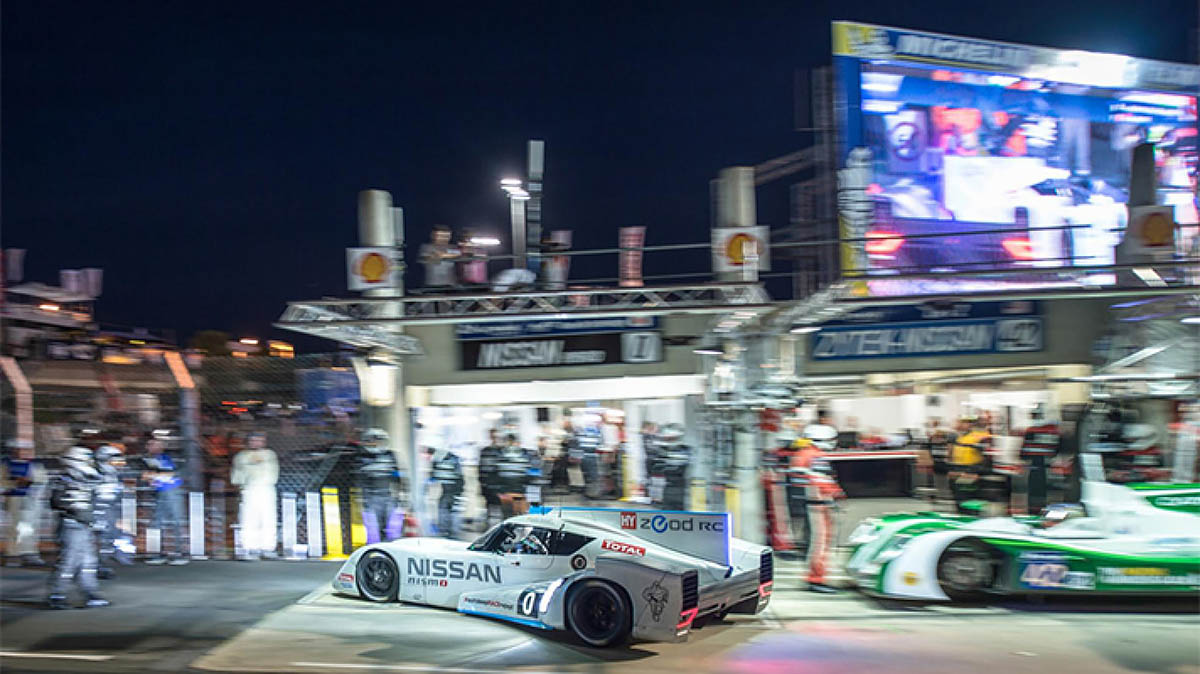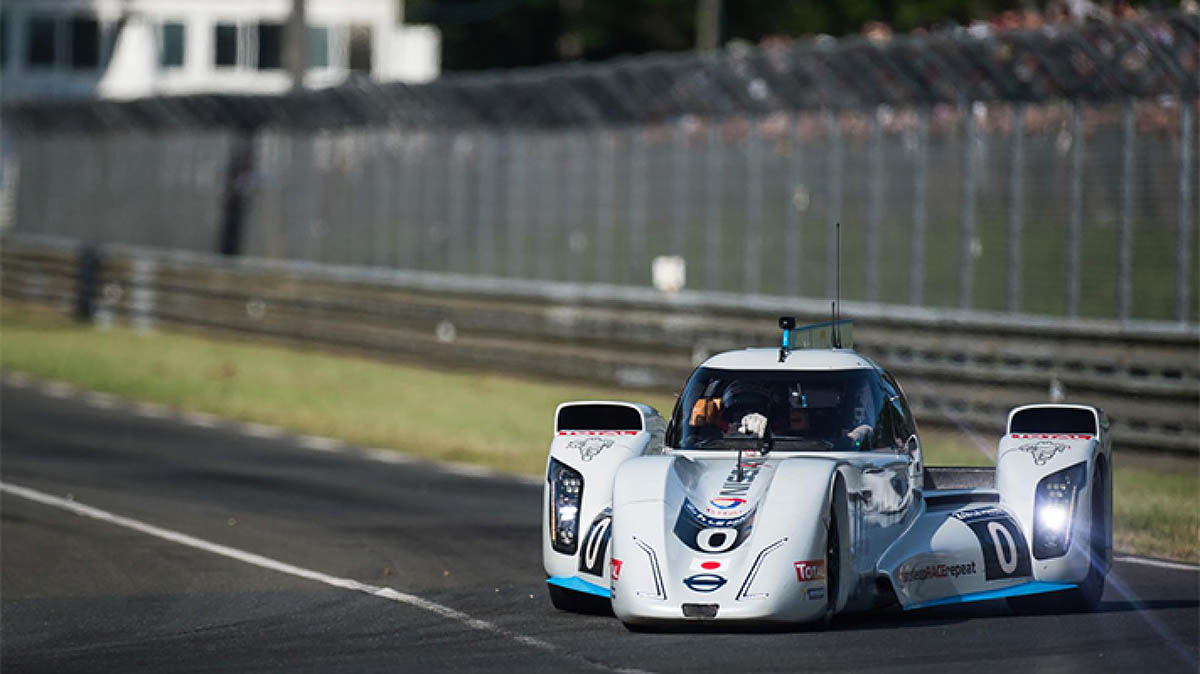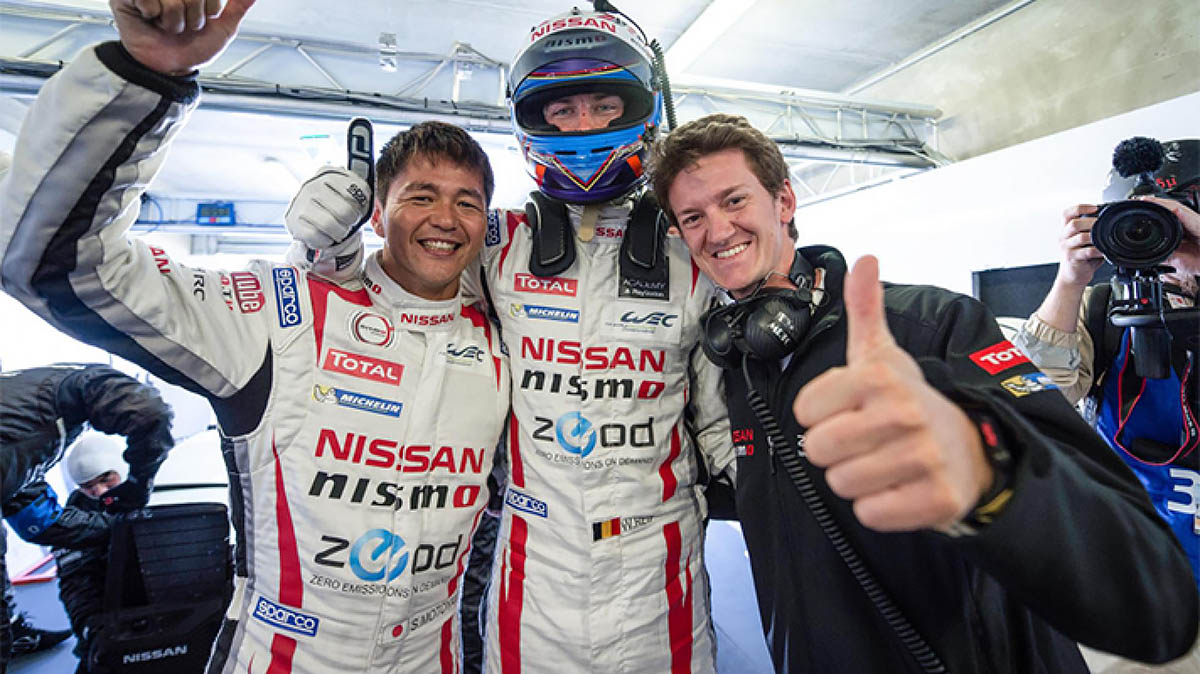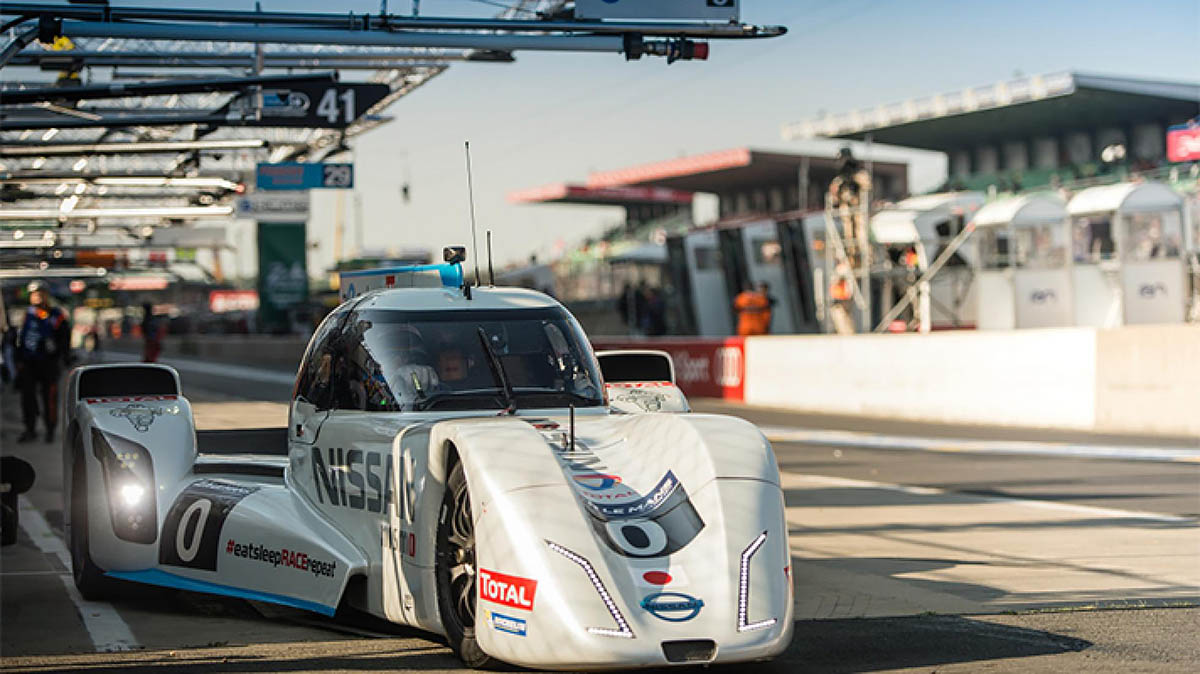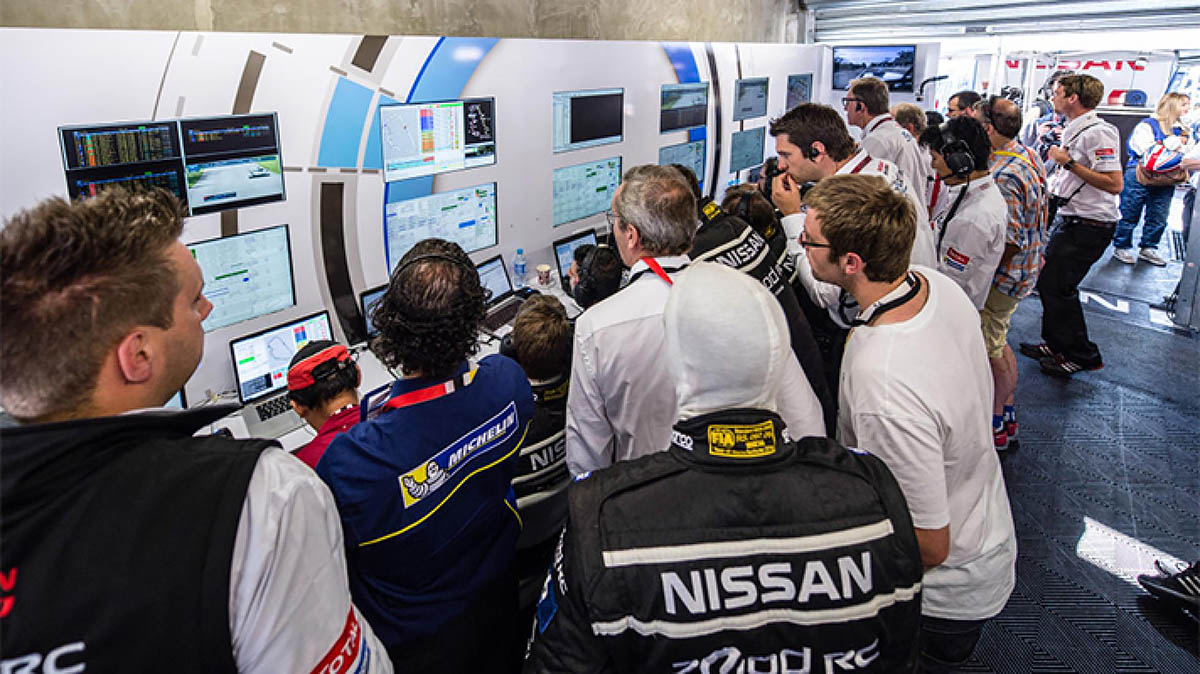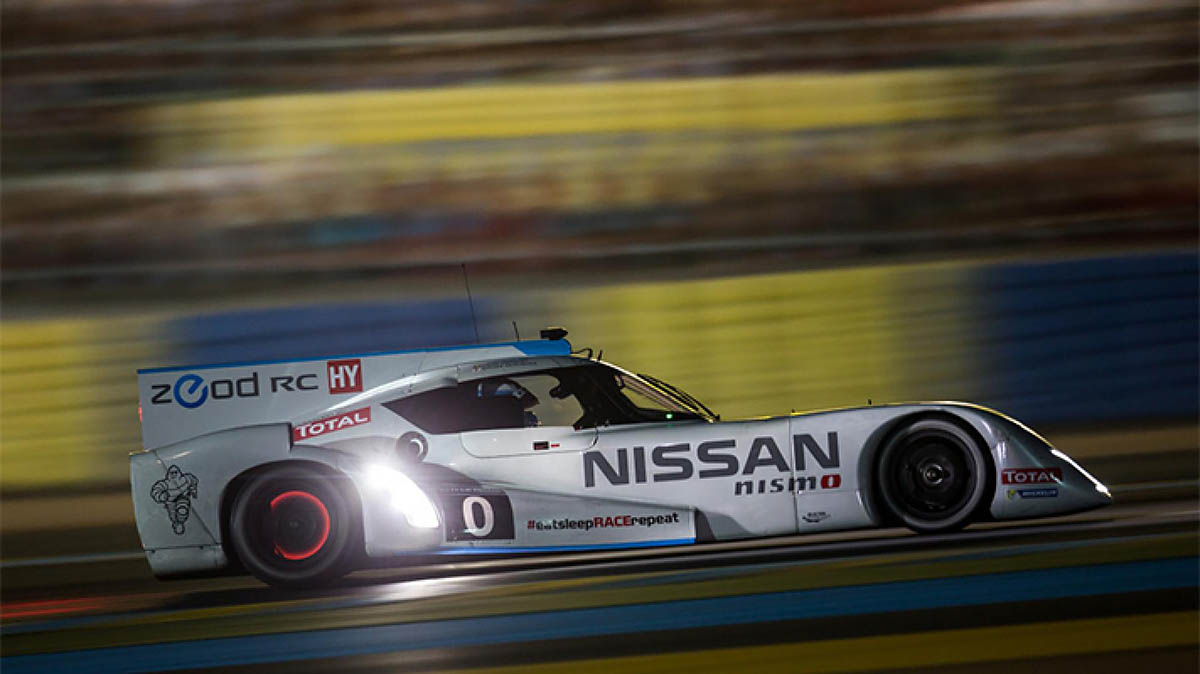A ride in the record breaking GT-R
Most car industry interviews take place in nondescript offices at corporate headquarters, or under the searing hot lights of a motorshow stand. Not this time. I’m asking the questions from the passenger seat of a swelteringly hot GT-R N-Attack, which happens to be wearing monochrome camouflage and an angry rear wing.
As you’ll have guessed from the name, this is no regular GT-R. It’s the very car that circulated the Nurburgring in 7:08.67 with Michael Krumm at the wheel, which - to put it into context - is 20 seconds faster than the Porsche Carrera GT set with Walter Rohrl.
Behind the wheel is Nissan’s Chief Operating Officer and fellow Brit Andy Palmer - one of the men responsible for the company’s entire operation around the world, including the race ventures here at Le Mans. As I lower myself down into the passenger seat, and before we’re let loose around the track, it’s time to start with some basics…
TG: So, erm, have you ever driven round Le Mans before?
AP: Never. I know it from a map and a fan-base point of view only. I do a bit of racing.
[If I’m honest this isn’t the answer I was hoping for, as I buckle up and we sit waiting for the safety car to be released from our holding position at the bottom of the Esses on the Bugatti Circuit…]
What do you race?
A 370Z, in the UK endurance series or sprints. Always very low key. I do it because I’m ultimately responsible for signing off every motorcar that we make, and though the cars rarely get used that hard by 99.9% of the population, as part of the sign-off I will always drive cars at the limit. Racing just helps me to calibrate my eyes and hands and feet.
So how important is motorsport in that DNA?
It’s more relevant now than it ever has been. There was a period in our company that we really forgot that DNA. I think I’ve got the brand DNA fixed now, I’ve got the styling DNA fixed, I’ve got the technological DNA fixed. Now the last thing is to get the handling and steering right - and the general driving experience - which is a work in progress. Basically we want to define the handling we want and make sure that’s it relevant. So whether you’re driving a Micra or a GTR, the fundamentals will all be there.
[Palmer’s main focus of the weekend - other that getting us safely around in one piece - is the Nissan Zeod, the Garage 56 project that continues to redefine the race car rule book, and which you can see completing the first ever electric lap of Le Mans in the pictures above.]
When you defined the ZEOD brief, what did success look like to you?
The brief was to hit 300kph and complete a full lap of the circuit on electric power only, so basically we’ve ticked the weekend brief and everything else now is a bonus. I would like to get as many laps under our belt as possible just to demonstrate the durability, quality and reliability of the technology, and - beyond that - for these guys have some fun. This, of course, makes the brand popular so it’s relevant from that point of view. In terms of the technological challenge, to some extent, and somewhat surprisingly, we’ve done it much earlier than I ever imagined we would.
[Sadly the Zeod retires five laps - just 23 minutes - into the race, when the most traditional element of the whole drivetrain, the gearbox, fails. But with the announcement that next year Nissan will field two cars in the LMP1 class, Palmer is clearly feeling bullish.]
With the announcement of serious plans for Le Mans next year, you clearly want to win?
There’s no point turning up if you don’t want to win. That doesn’t mean that you do win, but if you come with a mindset that you want to win, that’s the right mindset. If you come with the mindset that you’re here to prove technology and you’re here to do a marketing exercise… well, screw that. My instruction to the team is that you come to win. You’ve got two years to demonstrate that you can win this thing, so do it with the innovation and make it relevant to the road car. But go and win.
You have some stiff opposition…
I’m not decrying the opposition at all, you know the race will tell and there are so many variables anyway, no one can say we’re going to win, but what you can say is your mandate is a win. One of the things that the brought us back to LMP1 after all these years is that the ACO rulebook allows enough flexibility. So we can be as different as we want and I think that’s important. I take my hat off to the ACO, they’re one of the more flexible bodies in motorsport. I have a lot of time for what Audi have done, and it’s good to see Porsche back in the mix. It’s great that Toyota are having a go too. They might just pull it off this year.
Does Toyota’s success inspire you?
They do their thing and we do ours. It wasn’t a consideration in the decision-making. We came here probably for the same reason - it’s one of the best, if not the best racing events in the world and it demonstrates your reliability. We’re using it as a way to make it relevant to GT-R.
So is GT-R the key focus?
It’s the join between Nismo, racing and the road car brand, so it bridges everything together from that point of view.
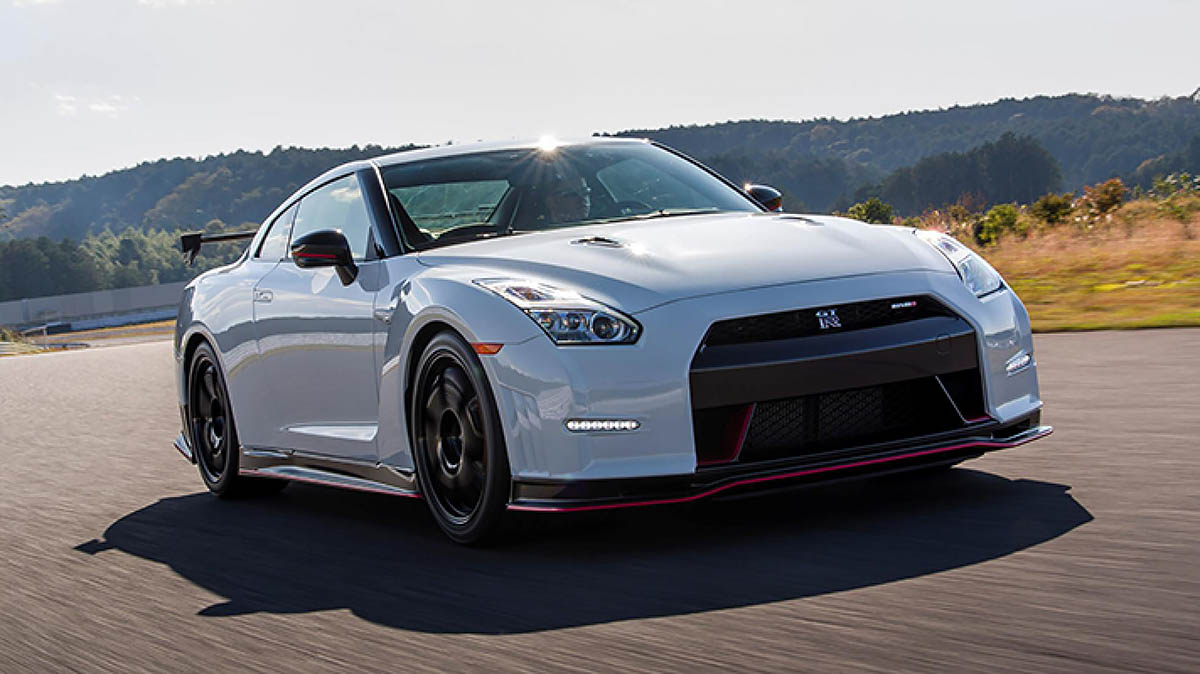
So far we’ve had a NISMO version of the Juke, 370Z and GT-R. What’s next?
Everywhere in the range where you’ve seen a ‘Sport’ or ‘S’ or ‘GT’ version, we’ll use ‘Nismo S’, ‘Nismo RS’ or both. To me the S is probably the most relevant, because it doesn’t use a lot of extra horsepower, but it makes the handling much more accessible. Most of us can’t get anywhere near the limits of the car. So why not make people feel good without the massive insurance bill that goes with it?
[With that, the barrier finally lifts, and an R8 pace car pulls forwards to lead us onto the circuit. One of the main aims of the whole Nismo Le Mans operation - according to Nissan - is to try and make motorsport more democratic. This ethos is perfectly illustrated by the fact that Palmer and I are leading an assembled pack of GT-Rs, Skylines, 370Zs and 350Zs of all ages, crowd sourced on social media with a promise of a lap of the mighty Circuit De La Sarthe.
As we barrel down the Mulsanne, the GT-R N-Attack pins itself effortlessly to the back of the swiftly driven pace car. “I wish he’d get out of the way, then we could get properly stuck in,” says Palmer, frustrated at the lack of commitment, but impressed with the lead he’s managed to develop from the following pack.
All too soon we slalom through the Porsche Curves and into the pit lane, just as the tail of our crowd-sourced snake slithers out onto the track. Long after our return there’s time for a couple more questions before Palmer heads for a meeting with the ACO…]
How you do you differentiate between the work you’re doing on this side of the business with Nismo, and the work you’re doing in F1 with Infiniti?
Different brands, different messages. Obviously Infiniti is really competing for the Mercedes-type customer, which historically BMW and Mercedes have done. It attracts a certain type of audience, which is very relevant to Infiniti. We needed to raise the awareness - the main issue was that people just didn’t know the name. So [the F1 partnership] was a great way to make it visible, very quickly. We were successful in achieving that.
With Sir Chris Hoy driving for you in the British GT championship, what are the chances that we’d see him here as part of the LMP1 team next year?
He’s brilliant - we were teammates in a sprint race together. He’s very talented, but you need to be very talented especially if you’re doing this level of racing, because - as I said - we’re here to win, which means the team will be picked on a democratic basis according to who’s good enough. If Sir Chris is good enough, he’s in with a shout.
